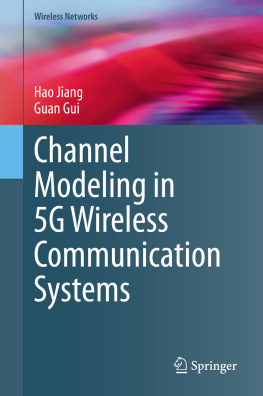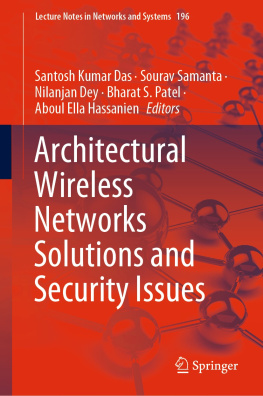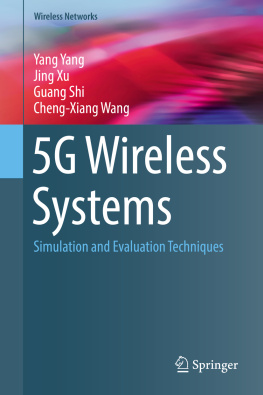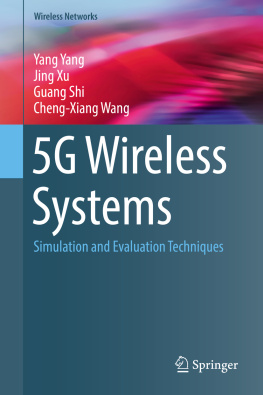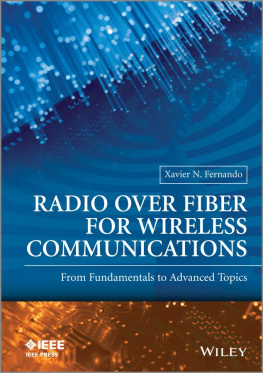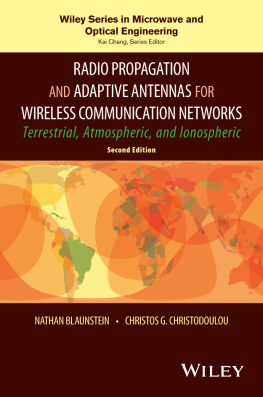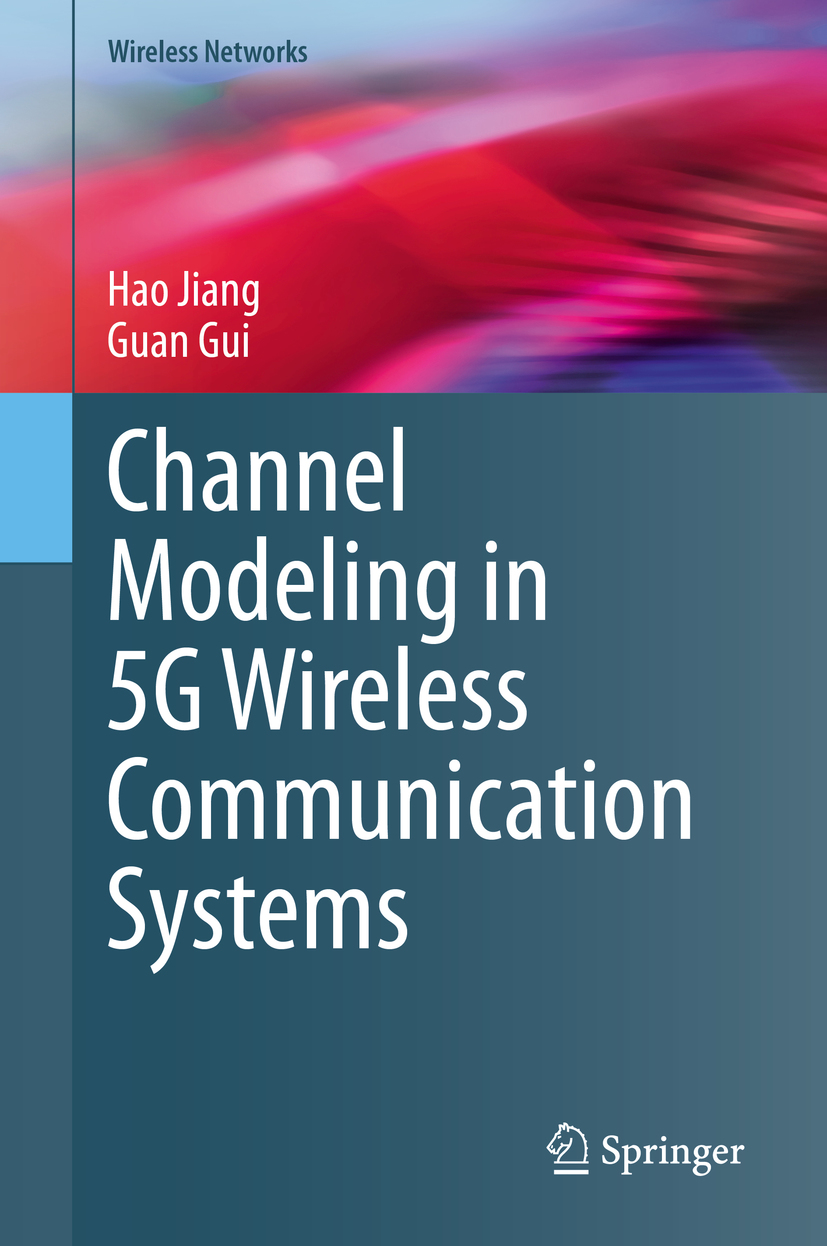Hao Jiang
College of Electronic and Information Engineering, Nanjing University of Information Science and Technology, Nanjing, China
Guan Gui
College of Telecommunications and Information Engineering, Nanjing University of Posts and Telecommunications, Nanjing, China
ISSN 2366-1186 e-ISSN 2366-1445
Wireless Networks
ISBN 978-3-030-32868-9 e-ISBN 978-3-030-32869-6
https://doi.org/10.1007/978-3-030-32869-6
The Author(s), under exclusive license to Springer Nature Switzerland AG 2020
This work is subject to copyright. All rights are reserved by the Publisher, whether the whole or part of the material is concerned, specifically the rights of translation, reprinting, reuse of illustrations, recitation, broadcasting, reproduction on microfilms or in any other physical way, and transmission or information storage and retrieval, electronic adaptation, computer software, or by similar or dissimilar methodology now known or hereafter developed.
The use of general descriptive names, registered names, trademarks, service marks, etc. in this publication does not imply, even in the absence of a specific statement, that such names are exempt from the relevant protective laws and regulations and therefore free for general use.
The publisher, the authors and the editors are safe to assume that the advice and information in this book are believed to be true and accurate at the date of publication. Neither the publisher nor the authors or the editors give a warranty, expressed or implied, with respect to the material contained herein or for any errors or omissions that may have been made. The publisher remains neutral with regard to jurisdictional claims in published maps and institutional affiliations.
This Springer imprint is published by the registered company Springer Nature Switzerland AG.
The registered company address is: Gewerbestrasse 11, 6330 Cham, Switzerland
Preface
The fifth generation (5G) wireless communication networks are being standardized and will be commercially available from 2020, which aims to minimize traffic accidents, improve traffic efficiency, and foster the development of new applications such as mobile infotainment. In addition, multiple-input and multiple-output (MIMO) and massive MIMO technologies are becoming widely used for V2V communications, because the required large-scale antennas can easily be mounted on vehicular surfaces. The successful design and analysis of 5G wireless communication systems require investigation on the propagation characteristics between a mobile transmitter and a mobile receiver into the emerging B5G communication scenarios, satellite-to-satellite communications, unmanned aerial vehicle (UAV) communications, diverse vehicle-to-vehicle (V2V) communications, etc.
For facilitating the design and analysis of the performance of 5G wireless communication systems, it is important to have reliable statistical channel models to capture the propagation properties between transmitters and receivers. Regarding the approach of channel modeling, the models can be categorized into deterministic models (e.g., ray-tracing method that requires a detailed description of communication environments) and stochastic models, while the latter rely on large measurement data sets that contain the underlying statistical properties of wireless channels obtained from a variety of mobile communication environments. Here, faced with the big datasets generated in the emerging 5G wireless communication networks, it is important to introduce artificial intelligence (AI) technologies, e.g., deep learning (DL) and deep reinforcement learning (DRL), into 5G communication networks to have better network management. Meanwhile, signal detection algorithms should be assisted to improve the 5G communication system performance. Therefore, the applications of AI to 5G channel modeling should be fully explored.
In Chap., we present an overview of current practices in V2V channel modeling, including spatial correlation functions (CFs) and Doppler power spectrum densities (PSDs). Moreover, we compare V2V channel models with conventional fixed-to-mobile (F2M) cellular channel models to determine their fundamental distinctions. Then, recent developments on V2V channel models for 5G systems are discussed. Finally, we detail scarcely explored aspects and technical challenges for V2V channel modeling in future communication networks.
In Chap., we developed a geometry-based statistical channel model for radio propagation environments, which provides the statistics of the angle of arrival and time of arrival of the multipath components. This channel model assumes that each multipath component of the propagating signal undergoes only one bounce traveling from the transmitter to the receiver and that scattering objects are located according to Gaussian and exponential spatial distributions, and a new scatterer distribution is proposed as a trade-off between the outdoor and the indoor propagation environments. Using the channel model, we analyze the effects of directional antennas at the base station on the Doppler spectrum of a mobile station due to its motion and the performance of its MIMO systems.
In Chap., a generalised three-dimensional (3D) scattering channel model for land mobile systems is proposed to simultaneously describe the angular arrival of multipath signals in the azimuth and elevation planes. The model considers a base station (BS) located at the center of a 3D semi-spheroid-shaped scattering region and a mobile station (MS) located within the region. Using this channel model, the authors first derive the closed-form expression for the joint and marginal probability density functions (PDFs) of the angle of arrival and time of arrival measured at the MS corresponding to the azimuth and elevation angles. Next, we derive an expression for the Doppler spectra distribution due to the motion of the MSs.
In Chap., we present a generalized visual scattering channel model for car-to-car (C2C) mobile radio environments, in which an asymmetric directional antenna is deployed at the mobile transmitter (MT). The signals received at the mobile receiver (MR) from the MT are assumed to experience multi-bounced propagation paths. More importantly, the proposed model first separates the multi-bounced propagation paths into odd- and even-numbered-bounced propagation conditions. General formulations of the marginal PDFs of the angle of departure (AoD) at the transmitter and angle of arrival (AoA) at the receiver have been derived for the above two conditions, respectively. From the proposed model, we derive an expression for the Doppler frequency due to the relative motion between the MT and MR, which broadens the research of the proposed visual street scattering channel model.
In Chap., we presents a 3D vehicle massive MIMO antenna array model for V2V communication environments. A spherical wavefront is assumed in the proposed model instead of the plane wavefront assumption used in the conventional MIMO channel model. Using the proposed V2V channel model, we first derive the closed-form expressions for the joint and marginal PDFs of the AoD and AoA in the azimuth and elevation planes. We additionally analyze the time and frequency cross-correlation functions (CCFs) for different propagation paths. In the proposed model, we derive the expression of the Doppler spectrum due to the relative motion between the mobile transmitter and mobile receiver.

